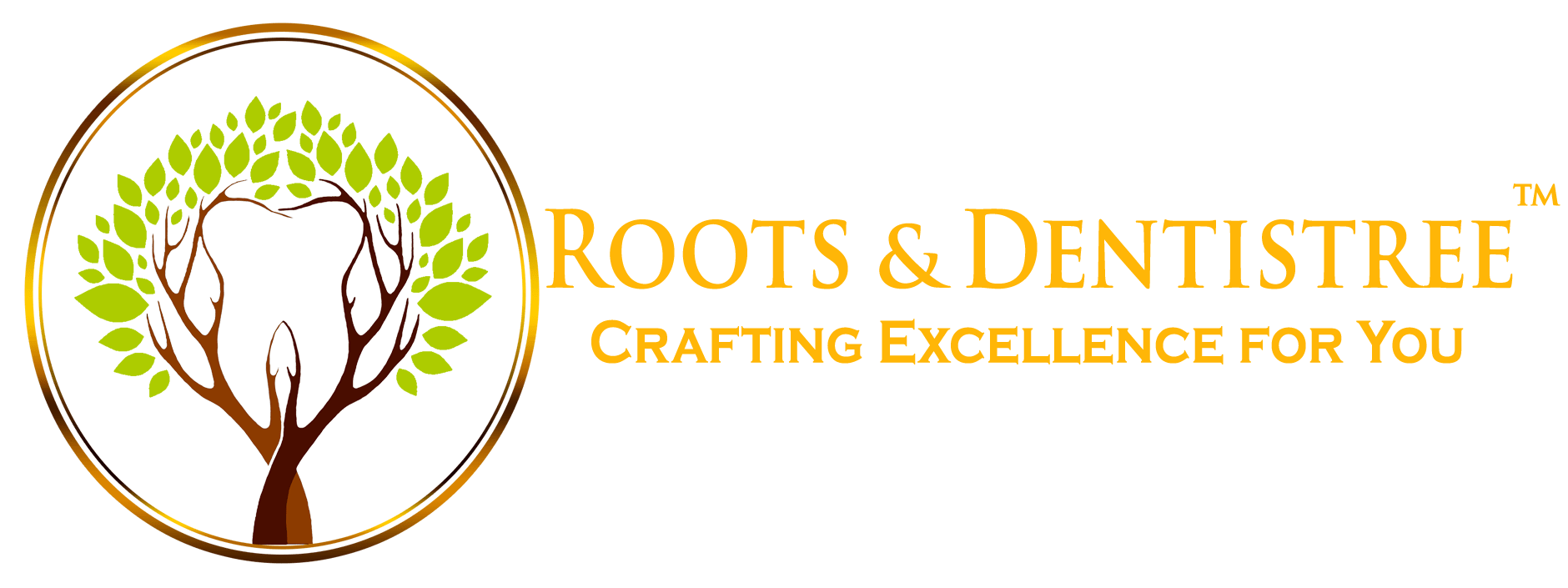what is a dental cavity?
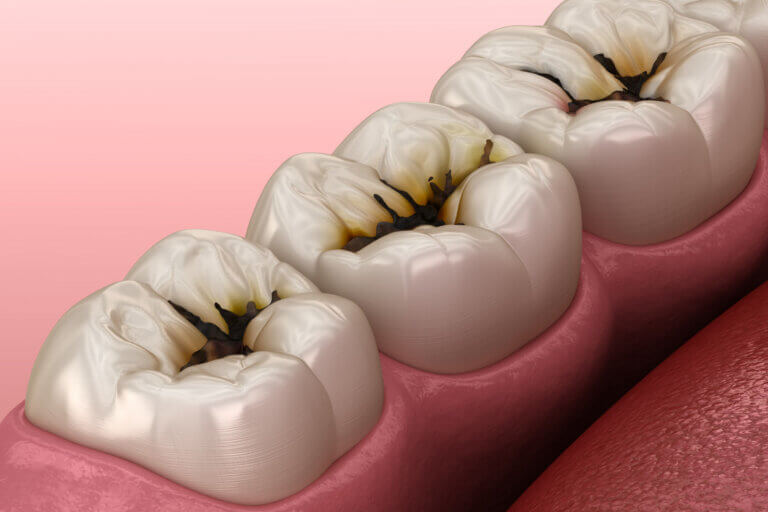
A Dental Cavity, also known as dental caries, is a common dental problem that affects people of all ages. It is a small hole or a damaged area on the surface of a tooth that develops when the hard outer layer of the tooth, called the enamel, is weakened by acid produced by bacteria in the mouth. If left untreated, cavities can grow bigger and cause Pain, Infection & even Tooth Loss.
Explaining Tooth Decay
Millions of bacteria reside inside our mouth. Sugar from the foods and drinks we consume feeds some of these bacteria, giving them energy to produce acid.
This acid attacks the surface of the teeth causing enamel to disintegrate & dissolve. This is called “Demineralization”.
Together, saliva and fluoride toothpaste protect the teeth by neutralizing the acids and replacing the lost enamel minerals. This is called “Remineralization”.
By regularly consuming sugary foods and drinks, the saliva and fluoride toothpaste may not be able to keep up with replacing the lost tooth minerals. When tooth mineral loss outweighs mineral replacement this can result in tooth decay.
If tooth decay is only in the enamel layer, it can still be stopped. Once it travels to the inner dentine layer, the tooth may require a filling.
Symptoms of tooth cavities
The symptoms of a cavity depend on the severity of the decay. They include:
- tooth sensitivity
- tooth pain
- a visible hole in your teeth
- black or white staining on your teeth
Causes of tooth cavities
Tooth cavities are caused by plaque, a sticky substance that binds to teeth. Plaque is a combination of:
- Bacteria
- Saliva
- Acid
- Food particles
Everyone has bacteria in their mouth. After eating or drinking foods with sugar, bacteria in your mouth turn sugar into acid. Plaque starts forming on your teeth soon after eating or drinking anything sugary. This is why regular brushing is important.
Plaque sticks to your teeth, and the acid in plaque can slowly erode tooth enamel. Enamel is a hard, protective coating on your teeth that protects against tooth decay. As your tooth enamel weakens, the risk for decay increases.
Everyone is at risk for cavities, but some people have a higher risk. Risk factors include:
- Too many sugary or acidic foods and drinks
- A poor oral hygiene routine, such as failing to brush or floss daily
- Not getting enough fluoride
- Dry mouth
- Eating disorders, such as anorexia and bulimia
- Acid reflux disease, which can result in stomach acid wearing down your tooth enamel
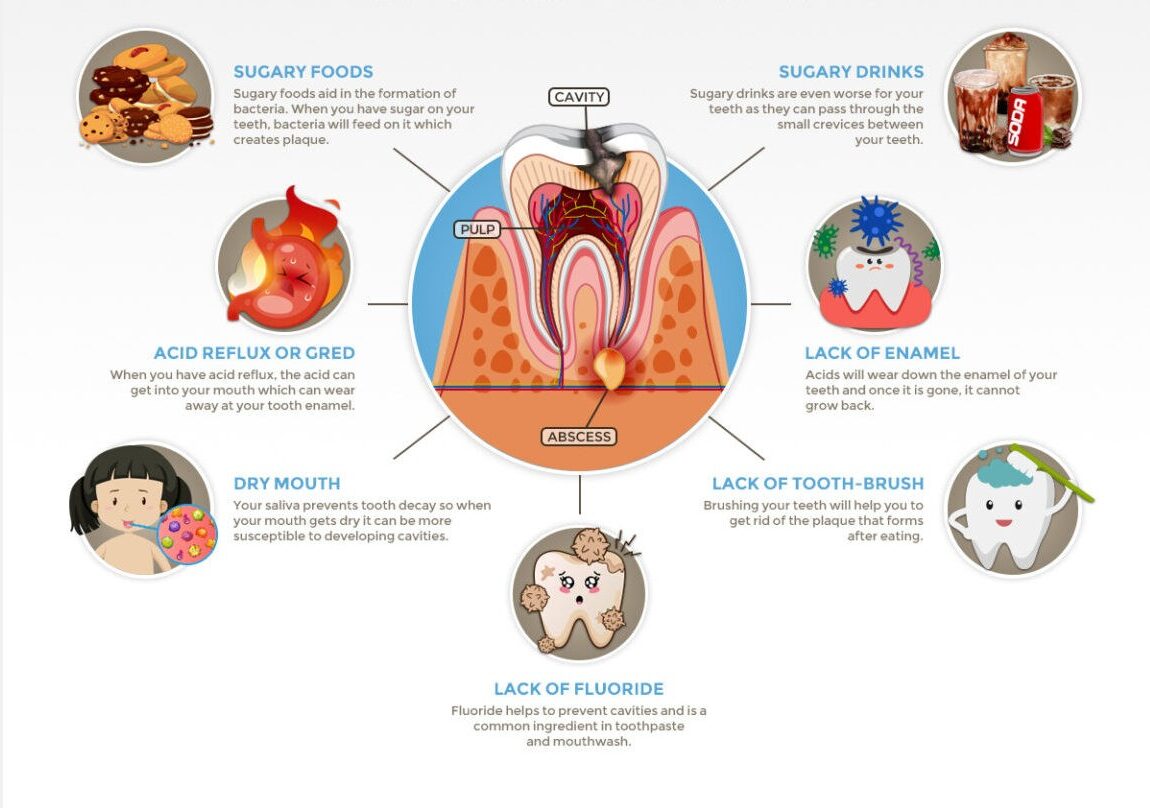
Treatment options for dental cavities
Tell your doctor about uncomfortable symptoms like tooth sensitivity or pain. Your dentist can identify tooth decay after an oral exam.
However, some cavities aren’t visible from an oral exam. So your dentist may use a dental X-ray to look for decay.
Treatment options depend on severity. There are several ways to treat a cavity.
Tooth fillings
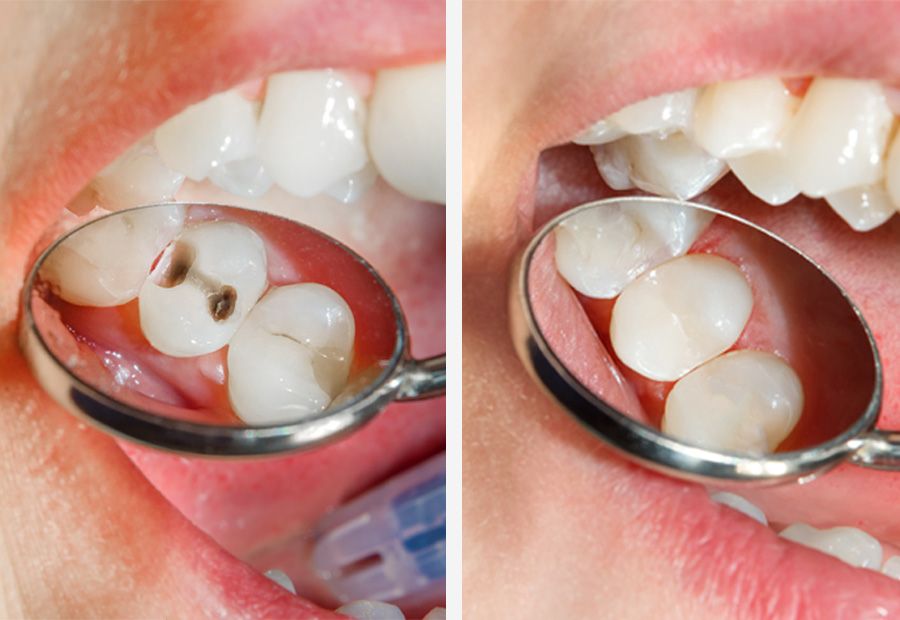
A dentist uses a drill and removes decayed material from a tooth. Your dentist then fills your tooth with a substance, such as silver, gold, or composite resin.
Crowns
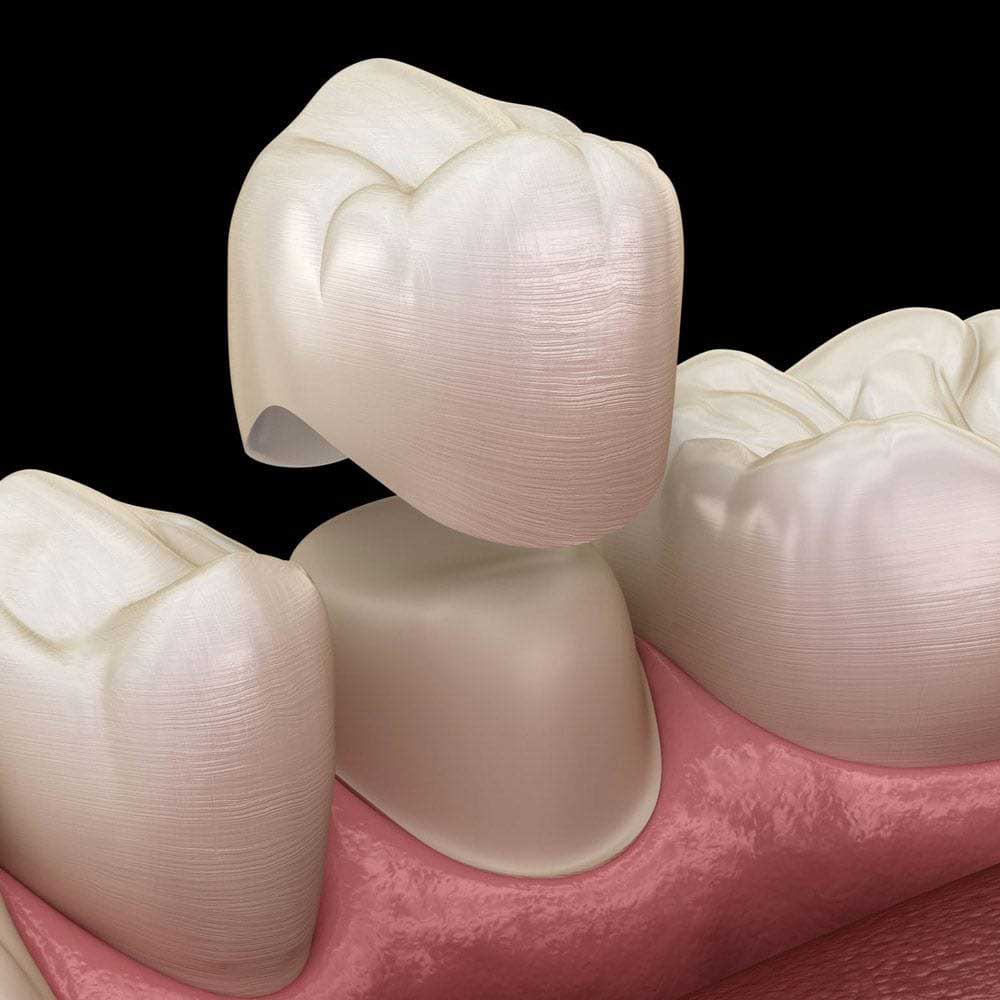
For more severe decay, your dentist may place a custom-fit cap over your tooth to replace its natural crown. Your dentist will remove decayed tooth material before starting this procedure.
Root Canal Treatment
When tooth decay causes the death of your nerves, your dentist will perform a root canal to save your tooth. They remove the nerve tissue, blood vessel tissues, and any decayed areas of your tooth. Your dentist then checks for infections and applies medication to the roots as needed. Finally, they fill the tooth, and they might even place a crown on it.
Early Stage Treatment
If your dentist detects a tooth cavity in its early stage, a fluoride treatment may restore your tooth enamel and prevent further decay.
Dealing With Pain
Cavities and tooth decay can be the cause of a lot of pain and discomfort. You may want to find ways to soothe irritation while you wait for your dentist appointment. There are a few things you can do to deal with discomfort temporarily:
- Keep Up Your Oral Hygiene Routine:
Continue to brush and clean all parts of your mouth, including any sensitive areas. - Try Over-The-Counter (OTC) Pain Relievers:
Check with your doctor if you can use OTC anesthetics. - Watch What You Eat:
Stay away from extremely hot or cold foods when eating or drinking.
Tips for Preventing Tooth Decay
- Remember to look out for foods with hidden sugars.
- Eat a diet low in sugar, less than 6 teaspoons (24 grams) of sugar per day.
- Brush twice daily using fluoride toothpaste to decrease your risk of developing tooth decay.
- And visit your dentist regularly to prevent problems and keep on smiling.


